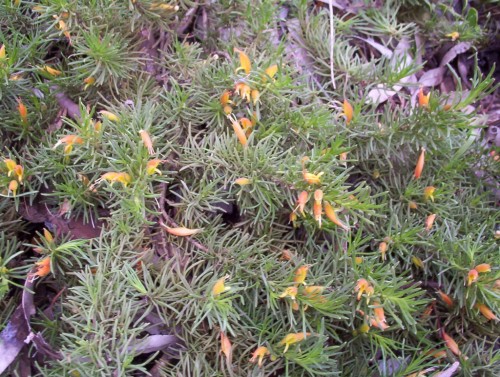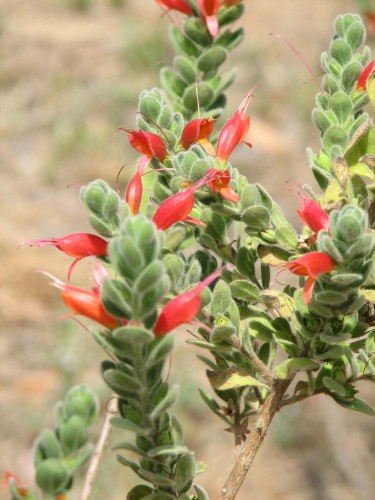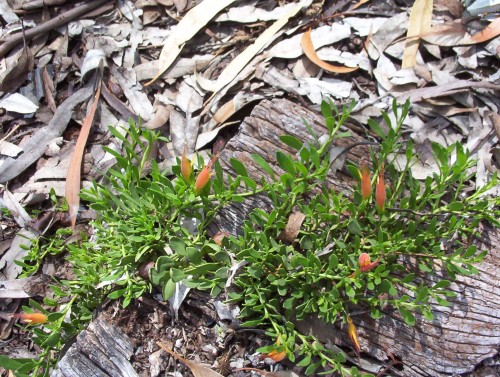More Plants for Dry Conditions
I was thinking about the list so far realizing that there are many plants which fit this category which I do not actually know apart from what I read in specialist books. There is great information available if it can be found. In most cases it is important to remember that these plants need to have good drainage. Raising the planting hole or the garden bed as little as 100mm (4″), will provide sufficient drainage.
More Plants for Dry Conditions prostrate to 1 metre high.
Hakea purpurea prostrate form
Hakea ‘Burrendong Beauty’
Hardenbergia violacea, purple, pink, white
Hardenbergia comptoniana
Chrysocephalum apiculatum
Chrysocephalum semipapposum
Hibbertia cunieformis
Hibbertia sericea
Homoranthus flavescens
Isopogon anethifolius
Isopogon formosus
Kennedia beckxiana
Kennedia macrophylla
Kennedia prostrata
Kennedia retrorsa
Leptospermum juniperinum variety horizontalis
Macrozamia communis
Melaleuca pauciflora
Melaleuca pulchella
Melaleuca scabra
Melaleuca thymifolia
Melaleuca violacea
Prostanthera calycina
Prostanthera magnifica
Ptilotus obovatus
Thryptomene saxicola ‘Paynes Hybrid’
Verticordia grandis
Verticordia nitens
Verticordia plumosa
Westringea ‘Jervis Gem’
Plants That Tolerate Dry Conditions
A list like this could have some surprising species. Drought tolerance is a subjective thing in a plant. It depends on the amount of natural rainfall, whether it fell in the usual time of the year for the area, whether the garden is mulched, what shade is available, protection from hot drying winds etc. It is easier to change the conditions in a garden than in a paddock. In general, if conditions have been average then these plants should manage 3-4 months of summer with little extra water. Of course if some water is available they will do better. One deep watering is far more beneficial than many light weekly waterings in any situation. Be aware that many Australian native species have a ‘quiet’ time during summer and manage on little water as a result. Excessive watering in this case is likely to kill the plants. It pays to know about the plants that are grown.
This list is intended for garden culture. These are some plants I know of. There will be many that can be added.
Some Plants that tolerate dry conditions prostrate to 1 metre tall.
Acacia brownii
Acacia lasiocarpa
Acacia mitchellii
Acacia pulchella
Astroloma humifusum
Astroloma pinifolium
Banksia petiolaris
Boronia caerulescens
Boronia filifolia
Boronia inornata
Calocephalus brownii
Calothamnus vallidus
Carpobrotus rossii
Carpobrotus modestos
Cheiranthera linearis
Dampiera linearis
Dampiera marifolia
Dampiera rosmarinifolius
Darwinia neildiana
Eremaea fimbriata
Eremaea violacea
Eremophila densifolia
Eremophila glabra forms
Eremophila glabra ‘Kalbarri Carpet’
Eremophila teretifolia
Eremophila veneta
Eriostemon pungens
Eriostemon verrucosus
Grevillea baxteri
Grevillea ‘Crosbie Morrison’
Grevillea juniperina (prostrate)
Grevillea nudiflora
Grevillea ‘Poorinda Royal Mantle’
Grevillea thelemanniana prostrate forms
Grevillea ‘Ellendale Pool’
Grevillea ‘Ellendale Lace’
Eremophila subteretifolia
When I first began growing Eremophilas (Emu Bushes) I tried those that were considered to be hardy and available through plant sales put on by the Australian Plants Society. 20 years ago there were not many species in the nursery trade.
Eremophila subteretifolia is ground cover plant covering about 3 metres and with the occasional branch rising to about 25 cm. It is mostly quite prostrate and has a cascading effect on embankments. It is not a vigorous plant so is easily contained to an area. This is another of those ground covering plants which could be used as a substitute lawn where it would not be walked over.
This species is very drought tolerant and frost hardy.
The plant has orange tubular flowers which are enjoyed by Honeyeaters, particularly Red Wattle Birds and New Holland Honeyeaters.
Eremophila splendens
I find Eremophila splendens to be a spectacular plant when in flower. The bright red flowers glow against the foliage which is quite hairy similar to some Eremophila glabra forms. This plant needs very good drainage. It is either a sprawling low plant or can be quite upright.
Eremophila splendens is restricted to Shark Bay about midway along the Western coast of Western Australia. It grows on the heathlands with Thryptomene and Melaleuca.
Last winter I lost some small plants to frost but I want to try again in a more sheltered location where the canopy of mallees may protect them. This is a plant that needs to be pruned aftyer flowering to encourage new and dense growth. Mature plants get very leggy and have sparse foliage without the pruning.
Eremophila glabra ‘Roseworthy’
This is another of those tough glabra forms. This one originates from the Roseworthy district which is north of Adelaide in South Australia, on the road to the Barossa Valley. Many forms of native plants are named for the town or district where they grow and this is particularly so of Eremophilas.
This form of Eremophila glabra is quite flat like a lawn. In fact a well grown plant has the fresh green appearance of lawn and I am sure could be grown as a lawn substitute. It would only be visually like that as it could not be walked on like a lawn. However to have a flat green area is visually cooling even if it is not a true lawn. The plant would be worth growing for that alone. However another benefit is that Honeyeaters love the flowers which vary from yellow to red on the plant when in flower. This is a frost hardy plant also.


